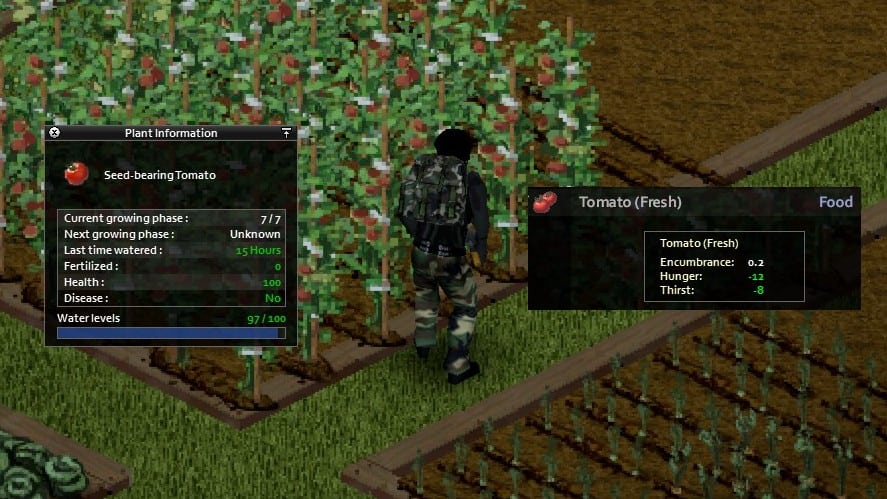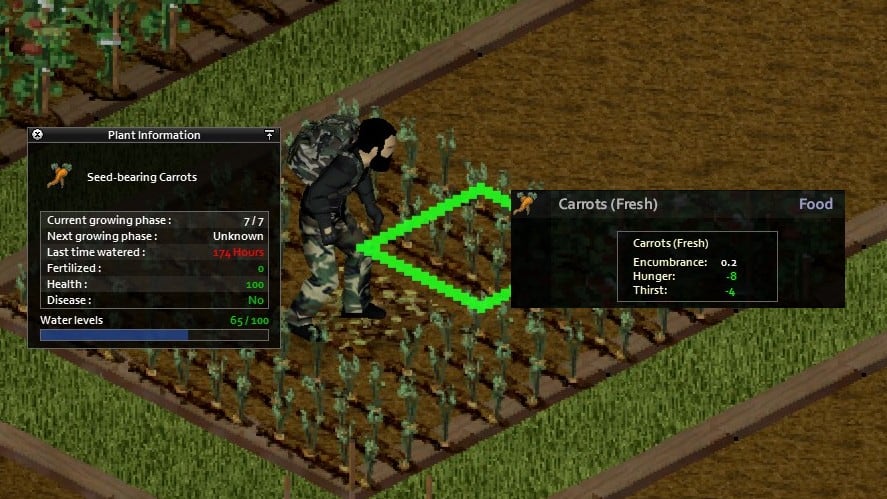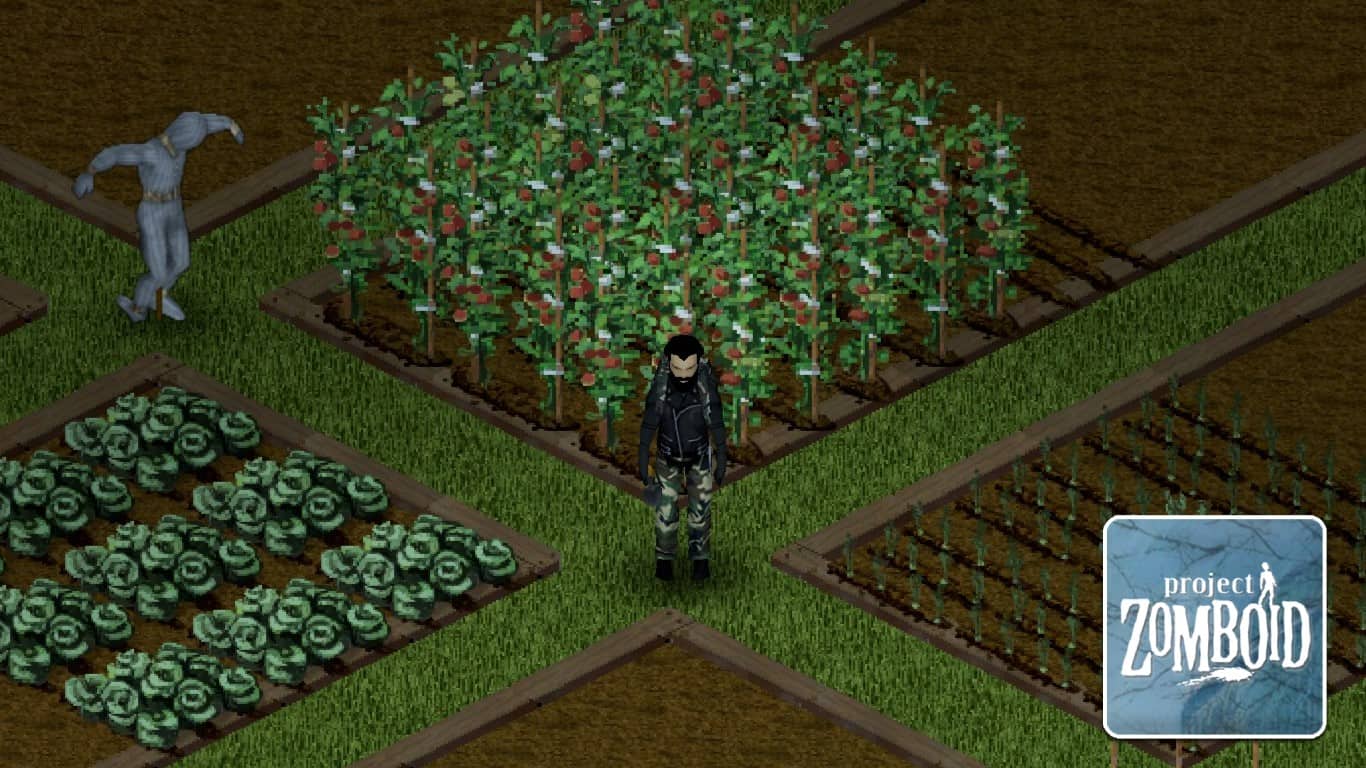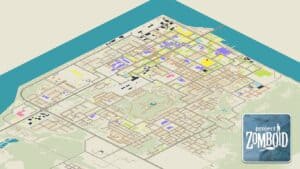Fishing, trapping, foraging, and farming are 4 ways of ensuring a sustainable source of food in Project Zomboid. While the others require you to stay close to their respective habitats, you can begin your crops wherever you want.
As Project Zomboid offers several types of seeds to grow, choosing the best one among them is necessary, as you can save time and focus on a specific crop while still optimizing your calories.
Recommended Read: What Are the Best Walls to Build in Project Zomboid?
In this guide, we’ll show you which crops are best to grow in Project Zomboid.
The best crops to grow in Project Zomboid are Cabbage, Tomato, and Carrot, in our opinion.
Table of Contents
Which Crops Are Best To Grow in Project Zomboid?
There are 7 types of crops in Project Zomboid. Each provides different calories and can be used for other purposes. So, picking the best one is based on your situation and experience, as is ours.
Occupation and trait can play a vital role in leveling up Farming skills.
Specifically, the Farmer and Gardener professions provide a total of 4 farming skill levels in the early game, and the higher the Farming skill, the more details are available on the crops.
On top of that, you should check out this post about a farming guide, as learning which crops are the best has nothing to do with knowing how to farm.
Not to mention that compost and fertilizer help boost your crop a step further. Hence, check out this post as well to learn how to make compost.
Before jumping into the list of the best crops in Project Zomboid, let’s see what criteria we set for them.
Criteria to Determine The Best Crop in Project Zomboid
There are a lot of things to consider when it comes to choosing the crops to grow. They are:
1. Nutrition
Nutrition refers to the amount of calories, protein, carbohydrates, and lipids in each seed. The more nutrition it provides, the more calories you receive.
2. Bait Capability
Aside from being consumed by your characters, the crop should be capable of acting as bait. This improves trapping skill significantly because you no longer need to forage for bait.
3. Ingredient Availability
Ingredient Availability indicates the presence of seeds in cooking recipes. If this crop is present in multiple recipes and can be combined with other ingredients, it opens up the possibility of creating a variety of nutritious dishes.
4. Growing Time
Growing time refers to the duration it takes for crops to fully mature and become harvest-ready. In other words, it represents how fast your crops grow until they are planted again.
5. Amount of Water
The amount of water indicates the number of units of water you need for your crops. Although you can get unlimited water from lakes, ponds, or rivers, this criterion is somewhat of an obstacle if your farm is far from these sources and you’re not able to make the rain collector barrels.
Now, let’s move up to the list of the best crops to grow!
Top 3 Best Crops To Grow in Project Zomboid
Here are our picks for the best crops to grow in Project Zomboid:
1. Cabbage
When it comes to the best crop in Project Zomboid, the cabbage crop stands out as one of the best choices for most farmers.
One of the most significant advantages of choosing cabbage is its nutritional value. Compared to other crops, cabbage provides the highest amount of calories (178), protein (9,14), carbohydrates (41,41), and lipids (0,71). These values mean a lot in reducing hunger.

Another remarkable feature of cabbage is its shortest growth time. In just 10 days, this crop reaches its peak, allowing for more frequent re-planting cycles.
This rapid growth rate is important, as it ensures a steady supply of fresh produce to keep you well-fed.
Additionally, cabbage serves not only as a food source but also as bait for trapping rabbits.
However, the drawback of cabbage is its high water requirements, requiring a minimum of 85 units for a successful yield. Compared to other crops, it is the most water-intensive option.
Additionally, cabbage is limited in its use in only 7 cooking recipes. Another concern is its short day-to-rotten value of 2 days. This can be a big problem if you’re frequently on the move and unable to return for a couple of days.
2. Tomato
If you’re searching for the perfect crop in Project Zomboid, tomatoes should be at the top of your list. They make an excellent choice due to their resilience against diseases and other reasons.
First, tomatoes can be used in most cooking recipes, making your meals tastier and healthier.
Plus, they last for a long time without rotting, around 10 days, which is longer than other crops, giving you more time to use them before they go bad.

Served as bait, tomatoes can be used to trap 3/5 animals (mouse, rat, rabbit). In case you have a large amount of tomatoes, there’s no room for lacking bait sources.
Another advantage of choosing tomatoes is that you only need 4 tomato seeds to start growing a crop, which is very helpful, especially in the game’s early stages.
While tomatoes have their advantages, it’s important to note their downsides. One significant drawback is their poor nutritional value, with 14 calories, 1,29 protein, 3,53 carbohydrates, and 0,21 lipids.
Although they might suit characters who are obese or overweight, most of us aim for high-calorie vegetable sources.
Another concern with growing tomatoes is their water requirements, which are quite significant at 75 units.
However, you can solve the problem by crafting rain collector barrels, which can help ensure a steady water supply for the crops.
Furthermore, patience is required when growing tomatoes, as they take up to 24 days to reach harvest.
3. Carrot
Carrot is our final pick for growing in Project Zomboid, and here’s why!
The first benefit of growing carrots is their quick growth time. After just 10 days, you get a full-growing carrot crop, which provides a speedy and reliable vegetable source.
Moreover, it takes 10 days for the carrot to become rotten. While you’re away from your base for a long time, you can come back and still have a good quality source of carrots to use.

In addition, carrots are highly versatile in cooking, as they feature in most recipes except for burgers. Having carrots on hand means having a bunch of choices, allowing you to make more dishes.
Furthermore, if you need bait to catch rabbits, look no further than carrots. Carrots can also be grown in-house.
On the other hand, carrots do have their downsides. While they have some advantages, their nutritional value might be disappointing.
Carrots provide only 5.84 carbohydrates, 0.57 protein, 0.15 lipids, and 25 calories, making them a bad choice for those seeking high-calorie foods.
Moreover, cultivating carrots can be a bit tricky due to their strict water requirements.
They have an upper limit for water before they “drown”, meaning that they are ideal for indoors, where you can manually water them every few days to keep the water level around 70-80 units.
This extra attention and care can be a challenge, especially when water is unobtainable.
Those are the best crops to grow in Project Zomboid.
Have any suggestions for this guide? Let us know in the comment section below.




